Connecting gas to a private house is not an affordable procedure for everyone, but thanks to the inexpensive cost of fossil fuel, it will pay off in the coming years. Almost all work, with the exception of earthwork and some assembly work, is performed by gas service employees at a predetermined price list.
To save money, homeowners take on some of the activities - for example, they dig a trench from the highway to the house. They can also participate in such a process as laying a gas pipeline in a case through a wall. If you figure it out, then you can cope with this procedure on your own, while representatives of Oblgaz take 8-10 thousand rubles for this. rubles.
For those who decided to equip the gas pipe in the house with their own hands, we have collected in one place all the information about the casing. You will learn everything from the regulatory framework to practical advice from the article presented by us. Our advice will be useful to independent owners of suburban property.
The content of the article:
-
Features of entering the gas pipeline into the house
- At what stage is the case installed?
- Why is sleeve lining necessary?
- Normative base - the basis of work
- Manufacturing or buying?
- Case installation instructions
- Differences in the introduction of bottled gas
- Conclusions and useful video on the topic
Features of entering the gas pipeline into the house
The process of casing itself is available to anyone who held a puncher in his hand and participated in the construction of a house. But there are a number of nuances that are required for any work with gas connection and with gas equipment. This is due to both the protection of the pipeline and the safety of the residents.
To begin with, we will analyze what a case for a gas pipe is and why it is needed, and then we will dwell in more detail on the process of laying a gas pipeline through the wall.
At what stage is the case installed?
The gas system located from the tie-in point to the central gas distribution line to the equipment installed in the house is called an internal gas pipeline. Simply put, this is not only a wiring installed inside the house, but also a branch located in the courtyard - underground, above the ground and in the area near the building wall.
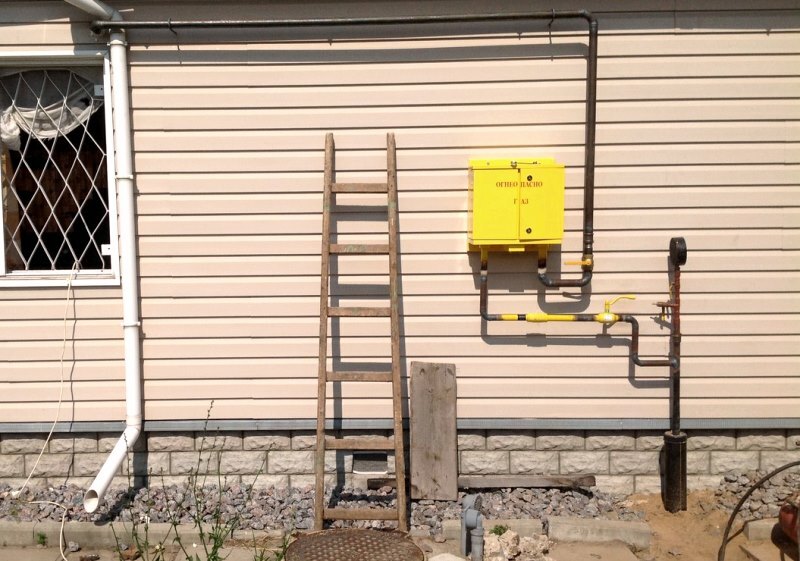
Even if the gas supply from the central highway to the house is made underground, the pipe is brought out near the building, and the polyethylene hose is replaced with a stronger steel pipe.
The underground gas pipeline, respectively, is included in the project for connecting gas to the house. According to the norms, low pressure gas is supplied to residential buildings - this is important when choosing equipment.
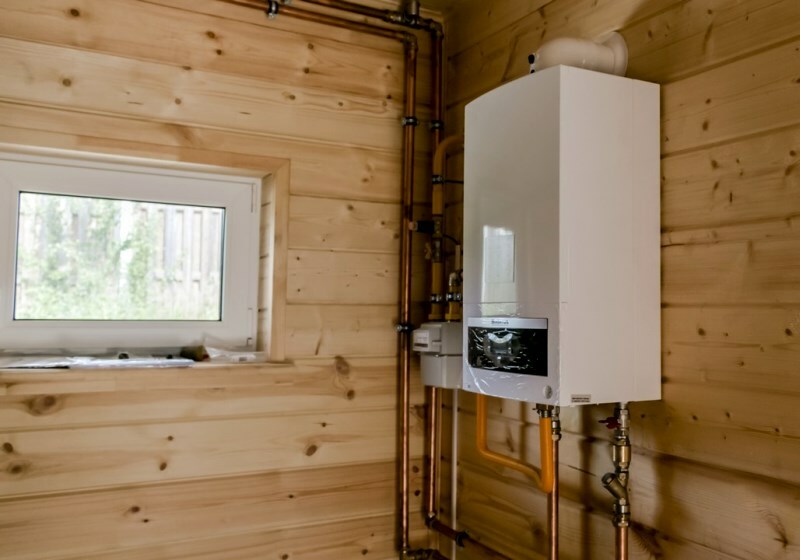
It is not recommended to install boilers in the basements of residential buildings and other places where the formation of explosive mixtures is possible, therefore, the input is carried out into a non-residential premises - a boiler room, a corridor or a kitchen
The question arises: when and where is it better to install the case for entering the pipe into the house? Theoretically, this can be done immediately after the approval of the project, when the locations of the installation of gas equipment and the exit of the pipeline from the ground are precisely known.
Usually, they strive to reduce the distance between these two points, that is, the gas pipeline is brought out as close as possible to boiler house or other non-residential premises where it is planned to install or have already been installed gas units - columns, boilers, stoves.

In order not to delay the connection work, we recommend purchasing and installing the equipment in advance - at the places indicated in the project. For unauthorized transfer to another place, home owners are fined
It is best to make a hole in the wall when the outlet of the gas pipeline from the ground to the outside is already equipped. If the highway is overhead, then after it is connected to the house, in order to more accurately determine the place of entry. In other words, the most favorable moment for laying a gas pipeline in a case is the end of internal and external work.
Why is sleeve lining necessary?
According to regulatory requirements, carry out any communications - gas, water, heating, sewer pipes, chimneys and ventilation ducts - through walls without additional reinforcement is prohibited.
A case or a sleeve acts as a protective structure - a strong metal casing that protects the pipe from mechanical damage.
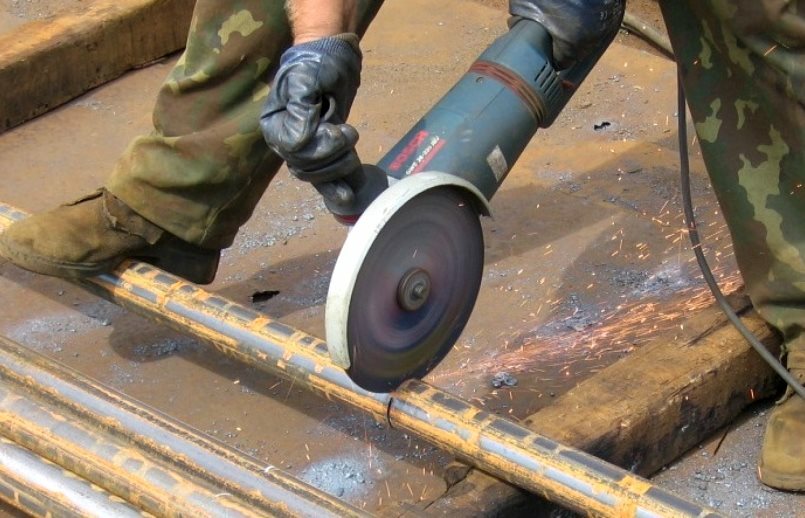
A self-made case is usually a piece of metal pipe, larger in diameter than the pipe of the pipeline being laid, securely fixed at the entry point
The main task of the case on the steel internal gas pipeline is to take the wall stress on itself and relieve the load from the pipeline. The use of cases is typical for the installation of gas pipelines.
For example, it is mandatory for laying gas pipes under road or railway tracks, as well as in soils that do not fully meet the installation conditions - heaving or flooded.
The wall case is different from the special equipment placed during the installation of distribution lines, however, it also needs to be strong and durable.
For this reason, it is forbidden to use polystyrene, polyethylene or other polymers as a sleeve - only steel, stainless steel or additionally treated against corrosion, is suitable.
Normative base - the basis of work
What to do if you are not sure about the choice of material or the representatives of the checking authority have any complaints? It is better to insure yourself and carry out installation work, relying on the legally accepted norms.
You just need to refer to the document SP 42-101-2003, or rather, to paragraph 6.7, which precisely indicates the nuances of the choice of material and installation:
- as an insulating material that serves as a gasket between the pipe and the case, rubber bushings, tarred tow or other material of similar characteristics are used;
- the gap on the outside of the case is tightly sealed with concrete mortar;
- the distance from the pipe wall to the case wall is at least 10 mm, with the exception of pipes with a diameter <32 mm - at least 5 mm;
- the sleeve should not protrude beyond the boundaries of the wall, but if the pipe crosses the horizontal overlap, the sleeve should protrude 50 mm on both sides.
Another very important condition is that the pipe, enclosed in a case, should not have either detachable or welded joints.
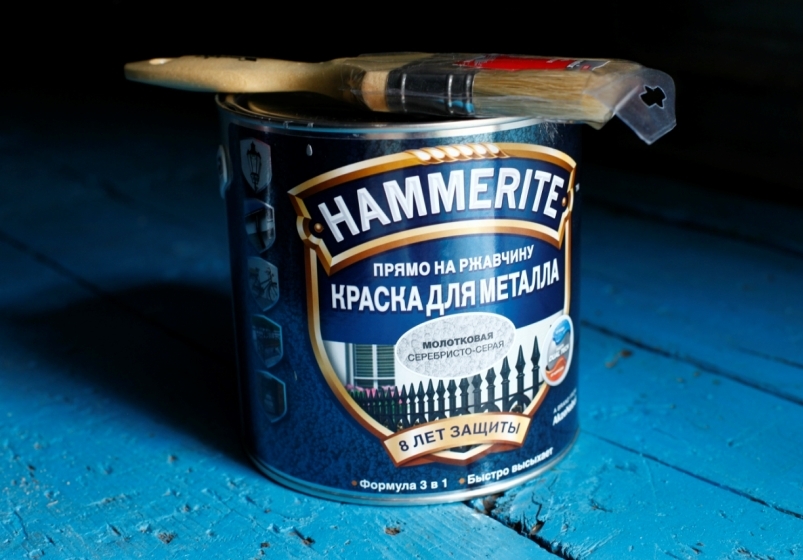
Protection is required not only for the gas pipe, but also for the liner itself - before installation, we recommend treating it with an anti-corrosion agent, for example, painting it in 2 layers with a special paint for metal
The aesthetics of the building will not suffer, since after the completion of the work, the installation site of the case is decorated with finishing material on the outside, and with plaster on the inside. If the house is wooden, and the cladding is not planned, we advise you to carry out the casing work more accurately.
Manufacturing or buying?
A large number of ready-made solutions can be found on sale - from inexpensive stamped 20-ruble sleeves of a small diameter to products made of thick-walled structural steel. Almost all cases are universal, that is, they are used to make penetrations for any communications, including gas ones.
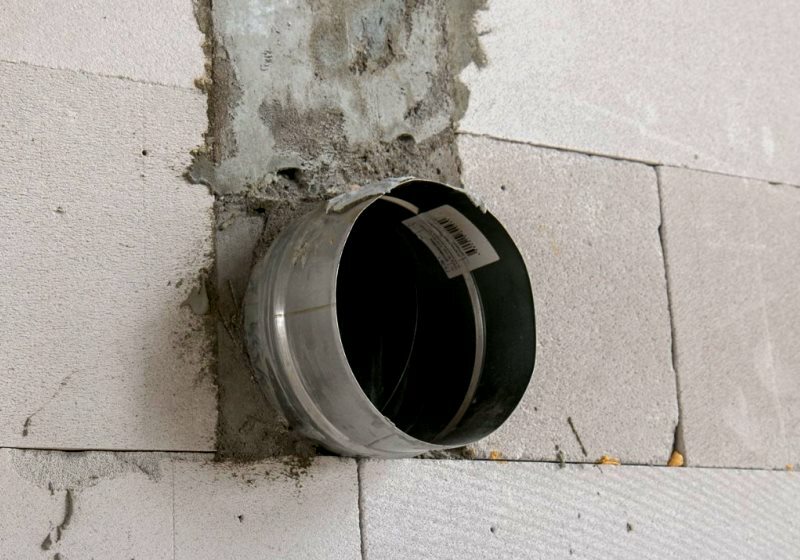
To protect against exposure to a humid environment, manufacturers apply a zinc coating or paint to the metal. Products are suitable for installation in all types of walls, have fire safety certificates
But if there is no desire to use a purchased part, and there is a lot of material left over from the construction of a house at hand, then you can make a sleeve with your own hands. A large diameter pipe is suitable, according to the norms - exceeding the gas pipe by about 20 mm.
A fragment is cut from the pipe, the length is equal to the width of the wall - its edges should not protrude beyond the surface. The ends are cleaned so that they do not have burrs and sharp edges. Then the workpiece is covered with protective paint for metal, preferably in 2 layers - the sleeve is ready.
Case installation instructions
The installation process of the case is simple and takes a little time. It is necessary to prepare in advance a tool for punching a wall and a material for sealing cavities between the sleeve and the wall.
Step-by-step instruction:
- Make a hole in the wall with a diameter greater than calculated diameter of the gas pipeline, in a place defined by the project.
- Place the sleeve inside the hole, check if it is correct in size.
- Fill the gap between the sleeve and the wall tightly with concrete.
- Wait until the solution is dry and check the stability of the installation.
The rest of the work is usually carried out by employees of the gas service - they lay the gas pipeline and isolate it.
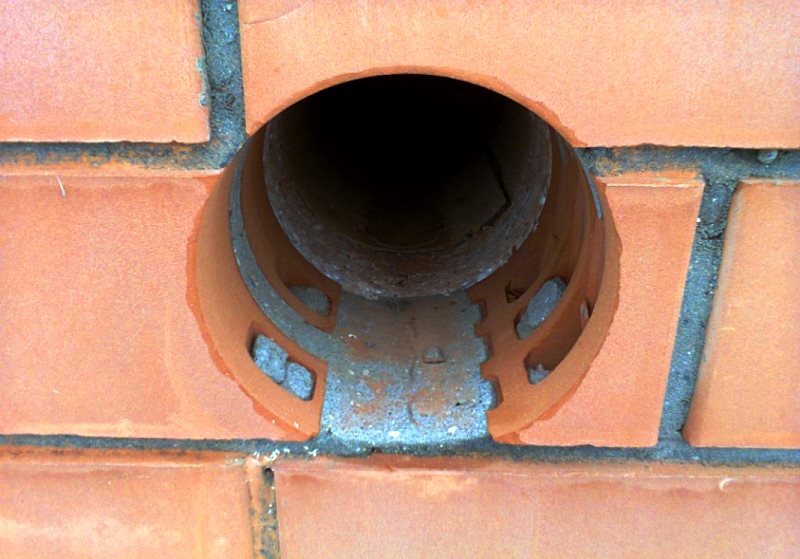
To punch a concrete or brick wall, use either a conventional perforator or diamond drilling - an expensive pleasure, but as a result, a smooth and beautiful hole is obtained.
If the house is wooden, then a large hole in the timber can be made with a drill by drilling around the perimeter or using a large-diameter crown.
Differences in the introduction of bottled gas
Gas cylinders are placed in a metal box outside the house, and the connection to the stove is made using a flexible rather than a metal hose.
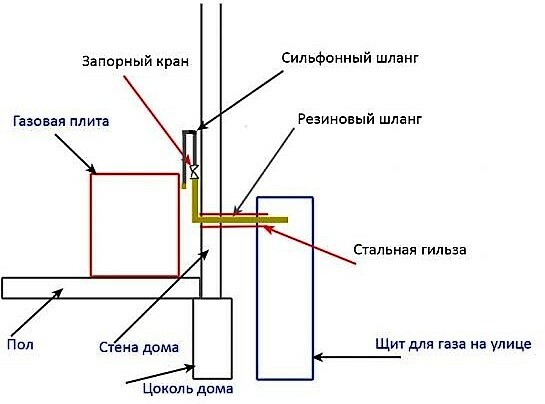
Installation diagram of gas equipment in a system with cylinders. The rubber hose is protected by a reliable metal sleeve installed in the wall of the house
The house is lumber, and gas supply hose - small diameter, so making a hole and installing the case is easy.
Image gallery
Photo from
For drilling, we recommend using a drill with a crown slightly larger than 32 mm - this will be the case
The rubber hose coming from the street goes into a bellows hose, which is then connected to the gas stove
At the transition point, the hoses are carefully sealed, securely fixed to the wall. A shut-off valve is also installed here.
The peculiarity of the case is that it protrudes beyond the wall and stretches to the metal box intended for the installation of cylinders
Hole in the wall of a wooden house
Gas hose connection from the inside
Adapter from rubber to bellows hose
Metal sleeve from the outside of the house
You can not install a sleeve between the beams or logs, it is recommended to drill a hole in the middle.
Conclusions and useful video on the topic
How not to lay a gas pipe through the wall:
Do-it-yourself sleeve installation:
Using the brick wall case:
The passage of a pipe through a wall is not the most difficult and time-consuming stage in the process of gasification of a private house, but it requires both compliance with regulatory requirements and accuracy in work. So that in the future there are no problems with the gas service, we recommend that you act strictly according to the project and coordinate all work with the employees of the controlling authority.
Do you want to talk about your own experience in the device for entering a gas pipe into a house? Do you have any useful information on the topic of the article? Please write your comments in the form below, ask questions, post thematic photos.


